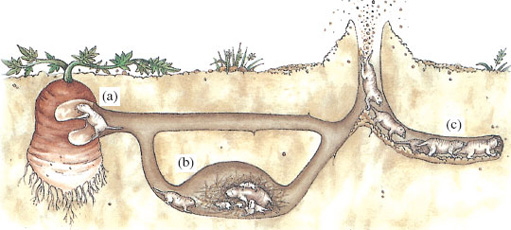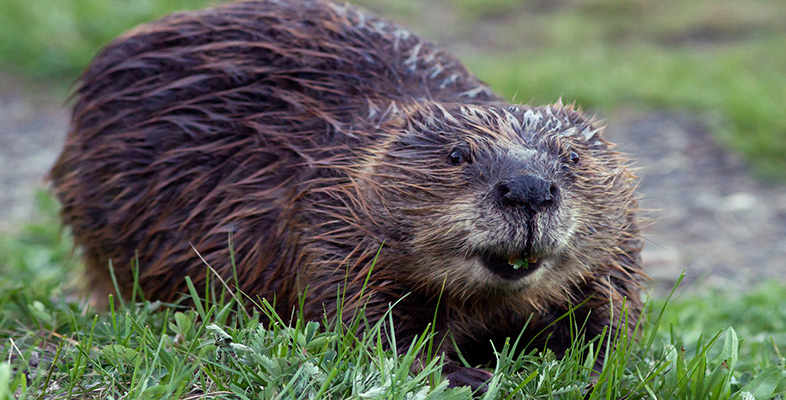5 Different reproductive strategies
5.1 Monogamy and polygamy
You've seen plenty of evidence that reproduction in rodents - more precisely what I've called their reproductive strategies - are versatile and varied. You'll appreciate that 'versatile and varied' describes the range of sexual habits seen in the rodents as a group, not the behaviour within a single species. As DA says, some are monogamous, which means that individuals mate exclusively with one partner, over at least a single breeding cycle or season. The marmots are an example of a group that practises monogamy. Some are polygamous in that individuals mate with several partners. Flying squirrels are polygamous, both males and females mate with as many partners as possible. Although this behaviour is sometimes described as promiscuous, it's best to avoid this term in a biological context because of its moral connotations. The term polygamous serves our purposes adequately. But the terms monogamy and polygamy should be used of individuals not of species. In some of those species where polygamy is observed, the behaviour is not possible for all individuals of the species. So you can talk of a polygamous individual, but not of a polygamous species.
Activity 4
In a few sentences describe the reproductive behaviour of the naked mole-rat and explain what is meant by the statement that 'polygamy is not possible for all naked mole-rats'.
Discussion
(The reproductive behaviour is described on pp. 78-80.) Just a single female breeds in each colony, while her plentiful offspring comprise a number of discrete 'castes', such as workers, and dispersers. Many individuals do not breed at all at any time in their lives. It would not, therefore, be possible to describe these individuals as polygamous.
DA completes the description by saying: 'The reproductive system practised by naked mole-rats is a highly specialized one. No other rodent, indeed no other mammal does anything similar' [p. 80]. The colony structure and mode of reproduction in those mole-rats species that are highly social is indeed extraordinary. Figure 2 shows how the structure of such a colony and the variety of roles and activities evident have prompted some biologists to draw parallels between these rodents and the complex colonies of the social insects that you may have encountered, such as ants and wasps.

The puzzling situation is why there should be a diversity of reproductive behaviour amongst rodents. Why is there not one 'best method'? Biologists propose two kinds of explanation. The first is the inequality of the sexes, and the second is the vagaries of the environment.
